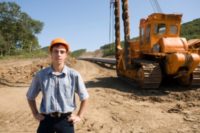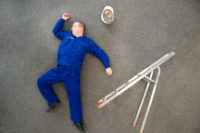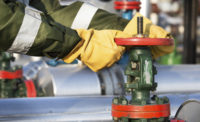During 2003–2013, fatality rates for oil and gas extraction workers decreased for all causes of death except those associated with fall events, which increased two percent annually during 2003–2013.
To better understand risk factors for these events, the CDC examined fatal fall events in the oil and gas extraction industry during 2005–2014 using data from case investigations conducted by OSHA. Sixty-three fatal falls were identified, accounting for 15 percent of all fatal events. Among fatal falls, 33 (52 percent) workers fell from a height of greater than 30 feet, and 22 (35 percent) fell from the derrick board, the elevated work platform located in the derrick (structure used to support machinery on a drilling rig).
Fall fatalities occurred most frequently when drilling rigs were being assembled or disassembled at the well site (rigging up or rigging down) (14; 22 percent) or when workers were removing or inserting drill pipe into the wellbore (14; 22 percent).
Measures that target derrickmen and workers engaged in assembling and disassembling drilling rigs (rigging up and down) could reduce falls in this industry. Companies should annually update their fall protection plans and ensure effective fall prevention programs are in place for workers at highest risk for falls, including providing trainings on proper use, fit, and inspection of personal protective equipment.
The majority of oil and gas extraction workers who died from a fall during 2005–2014 worked for a drilling contractor. The occupation most commonly involved in a fatal fall were derrickmen, who work up to 90 feet above the rig floor on the derrick board, and handle pipe. Their work is physically demanding, repetitive, and requires a great deal of concentration. Without proper safeguards, one misstep can result in a fatal fall. Rigging up and rigging down were identified as particularly hazardous activities; one reason for this might be the opportunity for miscommunication associated with the simultaneous movements of large equipment, vehicles, and workers that occur during the these activities.
In 86 percent of fatal falls in this study period, fall protection was required by regulation, but it was not used, was used improperly, or the equipment failed. Among the 24 fatal falls where fall protection was used, 15 (63 percent) workers were wearing a harness, but they fell because their harness was not attached to an anchor point.
In several of these cases, a visual or verbal check between the driller and the derrickman before drilling operations began might have prevented the fall. This check would ensure that the derrickman remembers to connect his fall protection harness to both his self-retracting lifeline and a restraint system on the derrick board. Workers must also be fitted for the proper size harness and trained in proper donning of their personal fall protection equipment. Fall protection equipment should be checked daily, and equipment that is worn, heavily soiled, or damaged should be removed from service and destroyed to prevent future use. The NIOSH rig check form for harnesses and lanyards can be used to ensure inspection is thorough and that only undamaged fall protection equipment is available for use.
Source: Centers for Disease Control and Prevention www.cdc.gov



